A potentiometer circuit is shown in Figure 3 below. AB is a uniform metallic wire having length of 2m and resistance of 8Ω. The batteries E1andE2 have emfs of 4V and 1.5V and their internal resistances are 1Ωand2Ω respectively.
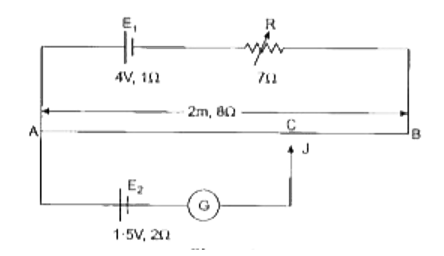
Now the jockey J is made to touch the wire AB at a point C such that the galvanometer (G) shows no deflection. Calculate the length AC.
Potential gradient in AB, k=VABL=22=1Vm−1
Let AC= l metre
∴ e= kl
⇒1.5=1×l
⇒l=1.5m
Similar Questions
A potentiometer circuit is shown in Figure 3. AB is a uniform metallic wire having length of 2 m and resistance of 8Ω. The batteries E1andE2 have emfs of 4V and 1.5 V and their internal resistance are 1Ω and 2Ω respectively.

If the jockey J is made to touch the wire AB at a point C such that the galvanometer (G) shows no defection. Calculate the length AC.View SolutionA potentiometer circuit is shown in Figure 3 below. AB is a uniform metallic wire having length of 2m and resistance of 8Ω. The batteries E1andE2 have emfs of 4V and 1.5V and their internal resistances are 1Ωand2Ω respectively.
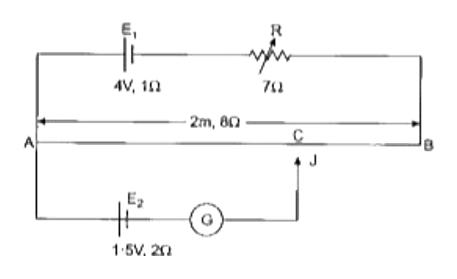
When the jockey J does not touch the wire AB, calculate:
the potential gradient across the wire ABView SolutionA potentiometer circuit is shown in Figure 3 below. AB is a uniform metallic wire having length of 2m and resistance of 8Ω. The batteries E1andE2 have emfs of 4V and 1.5V and their internal resistances are 1Ωand2Ω respectively.
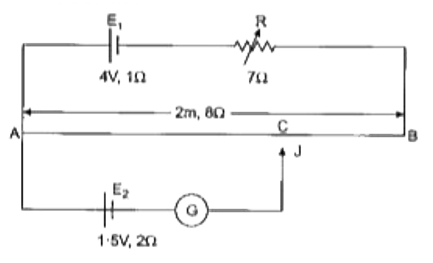
When the jockey J does not touch the wire AB, calculate:
the current flowing through the potentiometer wire AB.View SolutionA potentiometer circuit is shown in Figure 3. AB is a uniform metallic wire having length of 2 m and resistance of 8Ω. The batteries E1andE2 have emfs of 4V and 1.5 V and their internal resistance are 1Ω and 2Ω respectively.

When the jockey J does not touch the wire AB, calculate :
(a) the current flowing through the potentiometer wire AB.
(b) the potential gradient across the wire AB.View SolutionIn the ciruit the cells E1andE2 have emfs of 4V and 8V and internal resistance 0.5Ωand1.0Ω, respectively. Calculate the current through 6Ω resistance.
 View Solution
View SolutionE1andE2 are two batteries having emfs of 3V and 4V and internal resistances of 2Ωand1Ω respectively. They are connected as shown in Figure 2 below. Using Kirchhoff.s Laws of electrical circuits, calculate the currents I1andI2.
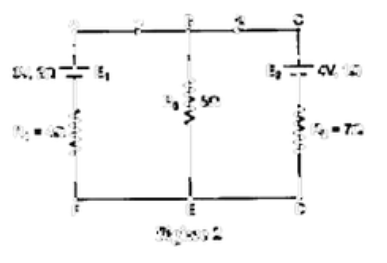 View Solution
View SolutionIn the circuit shown E,F,G and H are cells of emf 2V,1V,3V and 1V respectively and their internal resistance are 2Ω,1Ω,3Ω and 1Ω respectively.
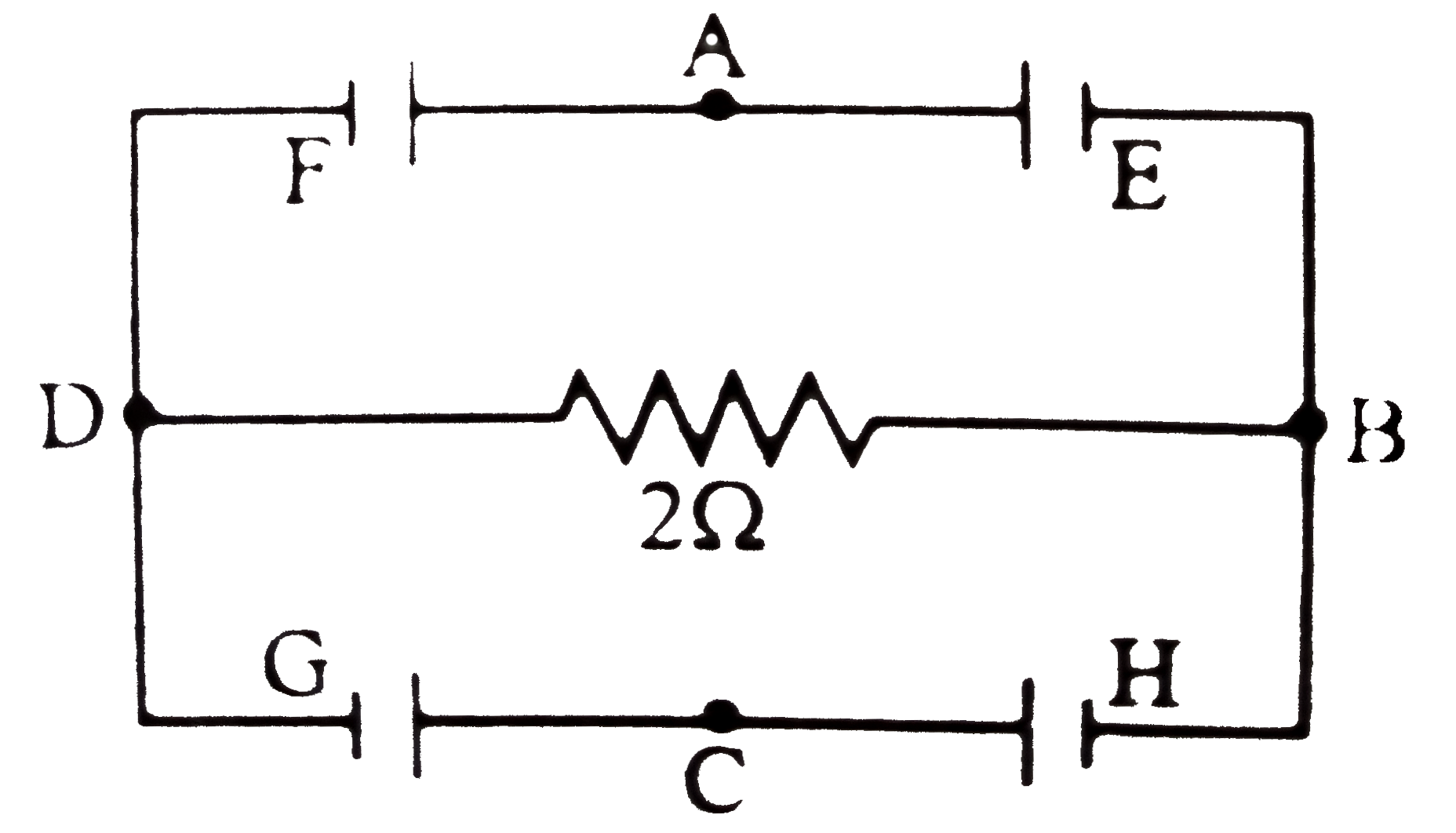 View Solution
View SolutionIn the circuit shown E,F,G and H are cells of emf 2V,1V,3V and 1V respectively and their internal resistance are 2Ω,1Ω,3Ω and 1Ω respectively.
 View Solution
View SolutionE1andE2 are two batteries having emfs of 3V and 4V and internal resistances of 2Ω and 1Ω respectively. They are connected as shown in Figure 2. Using Kirchhoff.s Laws of electrical circuits, calculate the current I1andI2.
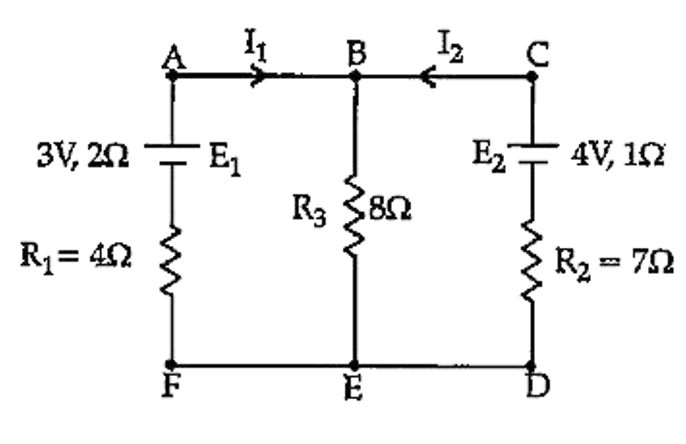 View Solution
View SolutionA battery of EMF E produces currents 4 A and 3 A when connected to external resistance 1Ω and 2Ω respectively. The internal resistance of the battery is
View Solution

